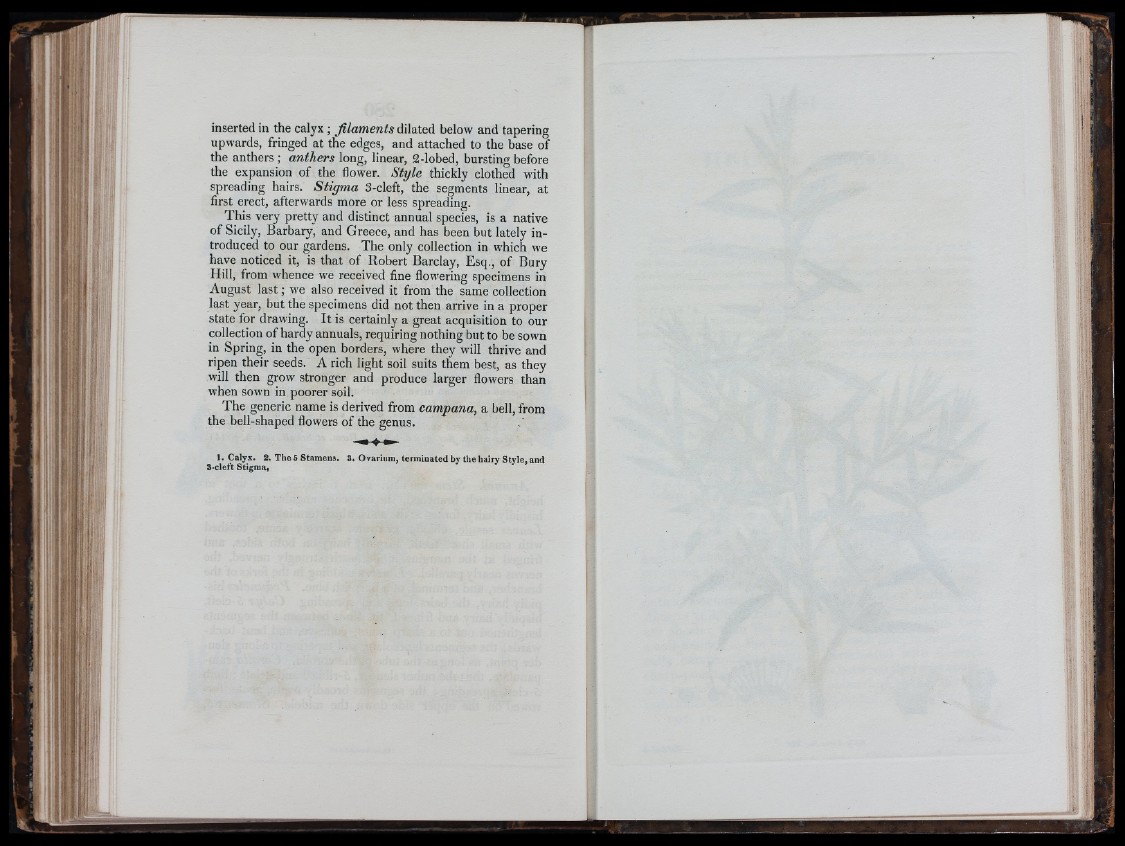
inserted in the calyx; filaments dilated below and tapering
upwards, fringed at the edges, and attached to the base of
the anthers ; anthers long, linear, 2-lobed, bursting before
the expansion of the flower. Style thickly clothed with
spreading hairs. Stigma 3-cleft, the segments linear, at
first erect, afterwards more or less spreading.
This very pretty and distinct annual species, is a native
of Sicily, Barbary, and Greece, and has been but lately introduced
to our gardens. The only collection in which we
have noticed it, is that of Robert Barclay, Esq., of Bury
Hill, from whence we received fine flowering specimens in
August la s t; we also received it from the same collection
last year, but the specimens did not then arrive in a proper
state for drawing. I t is certainly a great acquisition to our
collection of hardy annuals, requiring nothing but to be sown
in Spring, in the open borders, where they will thrive and
ripen their seeds. A rich light soil suits them best, as they
will then grow stronger and produce larger flowers than
when sown in poorer soil.
The generic name is derived from campana, a bell, from
the bell-shaped flowers of the genus.
I. Calyx. 2. The 5 Stamens. 3. Ovarium, terminated by tbe hairy Style, and
S.cleft Stigma,